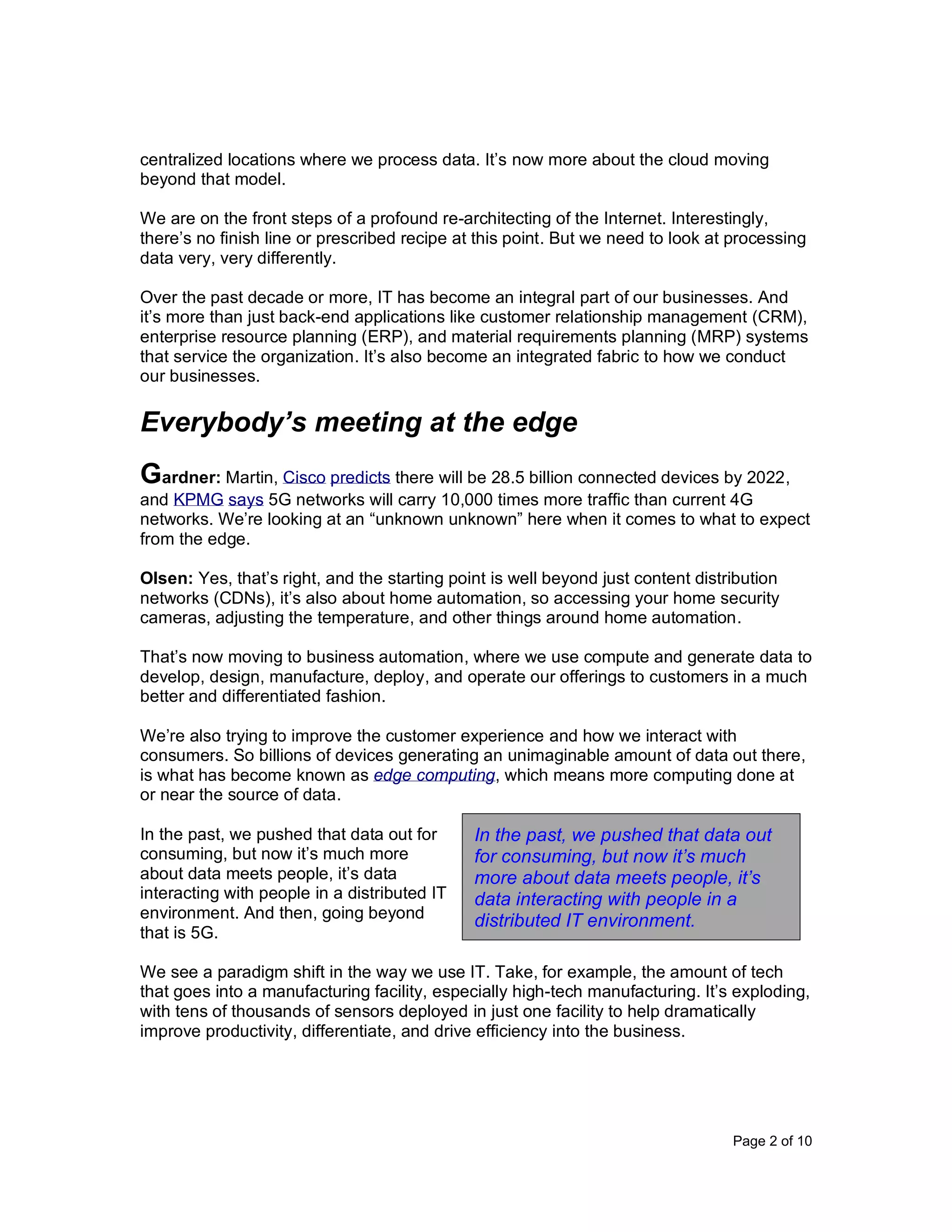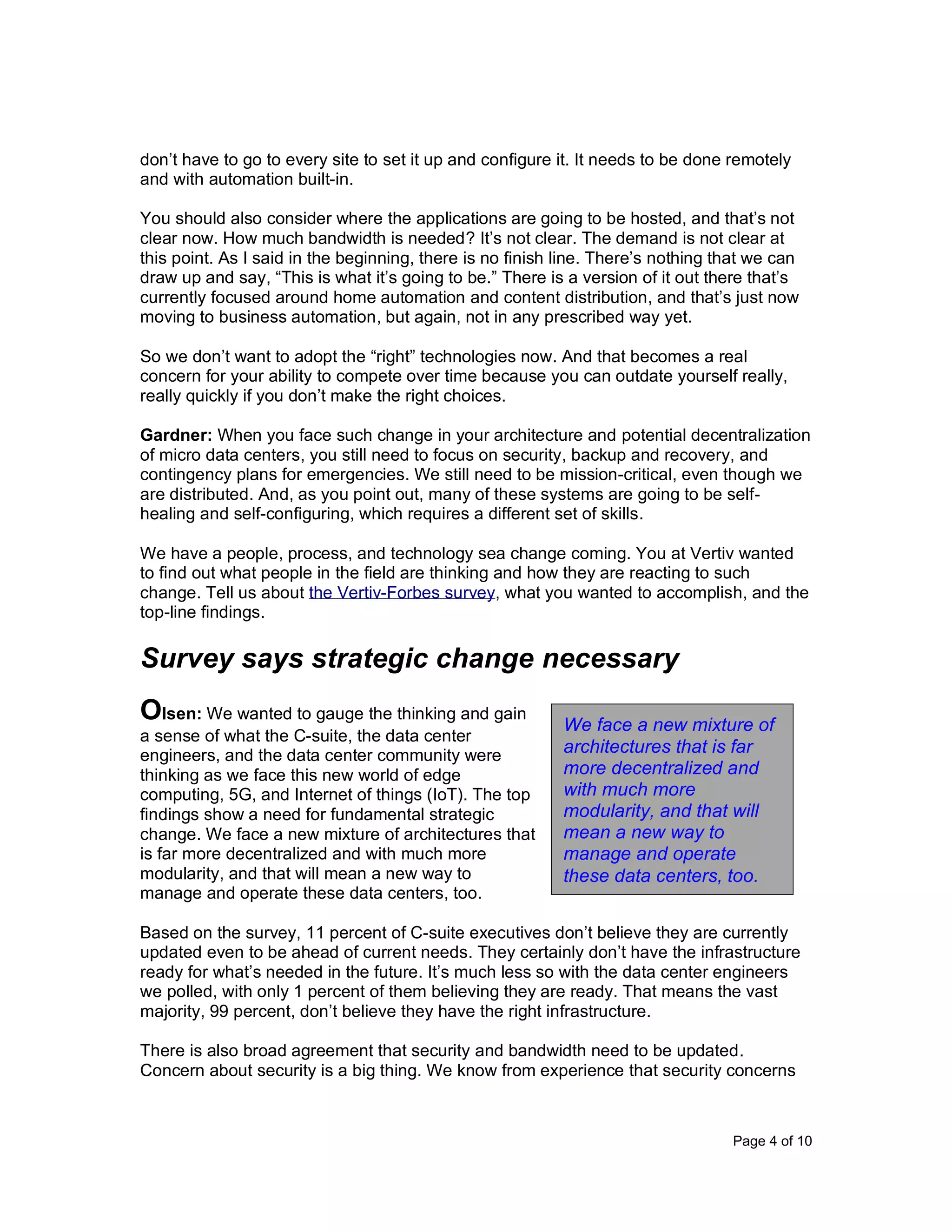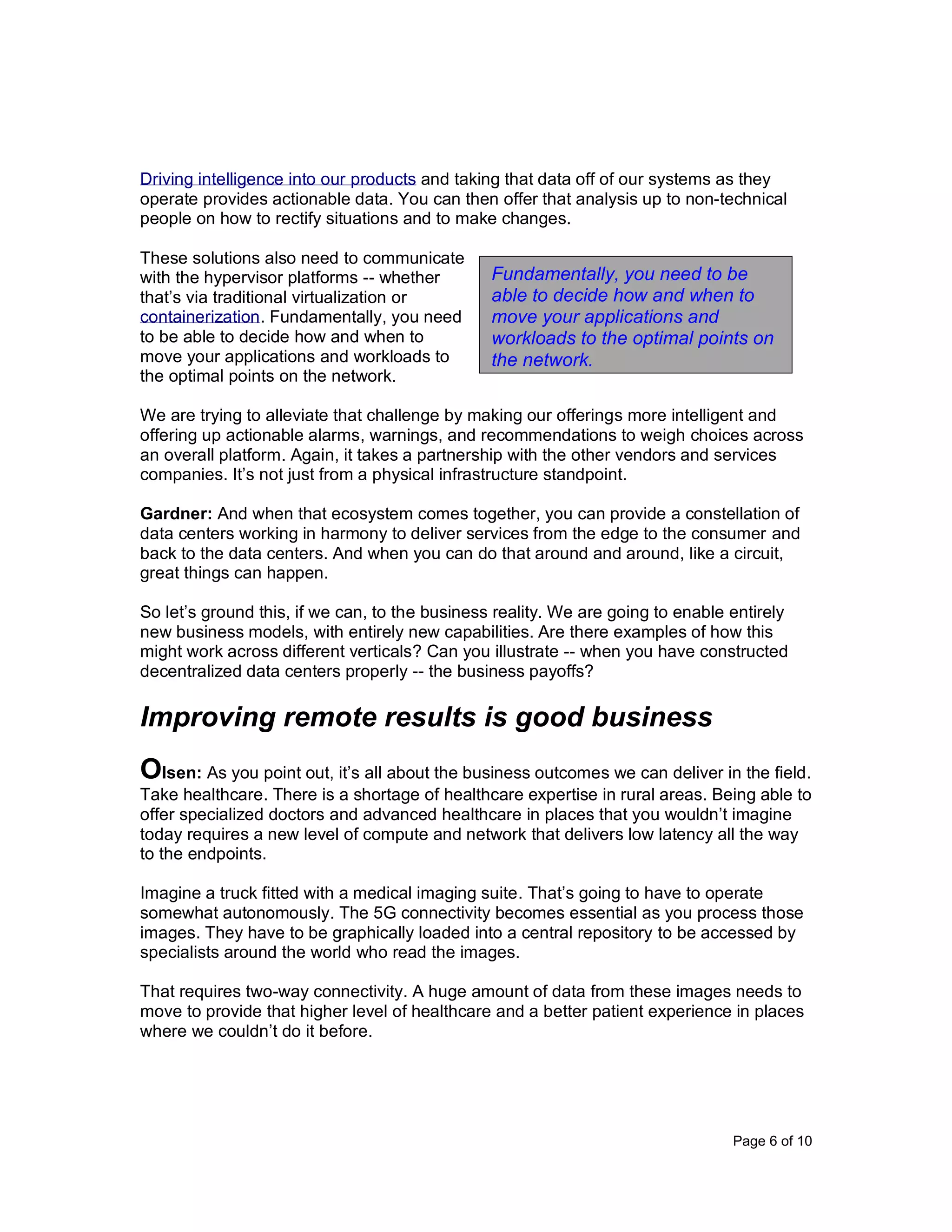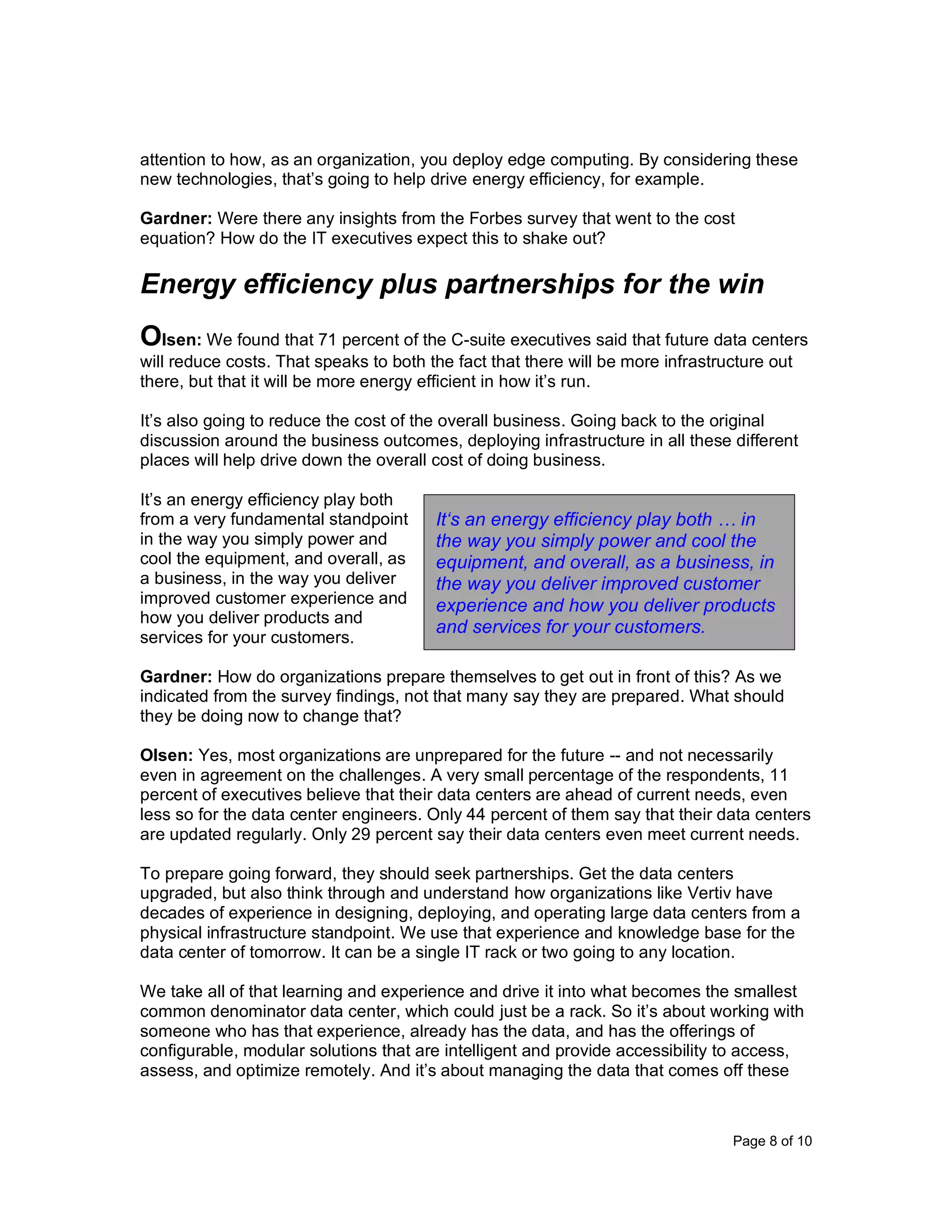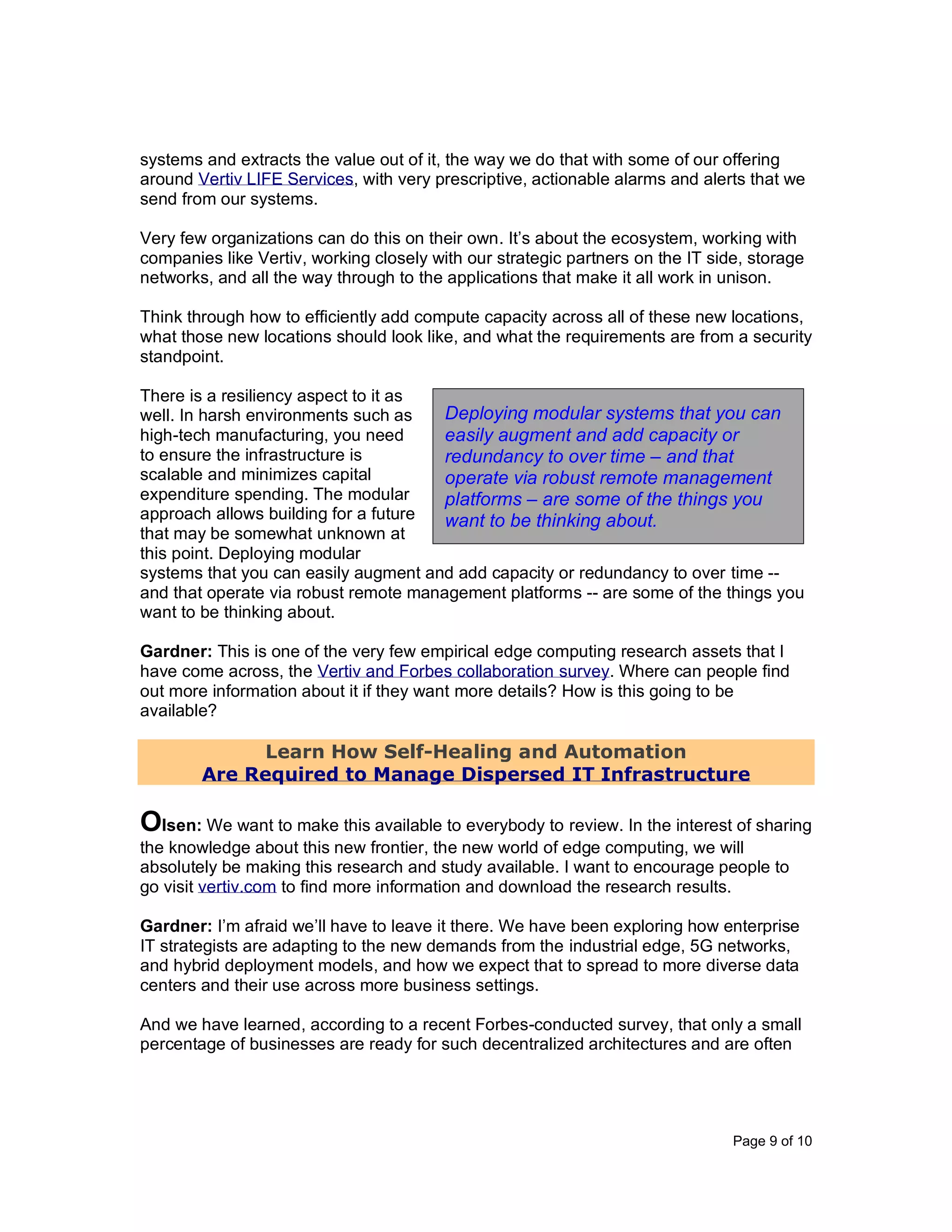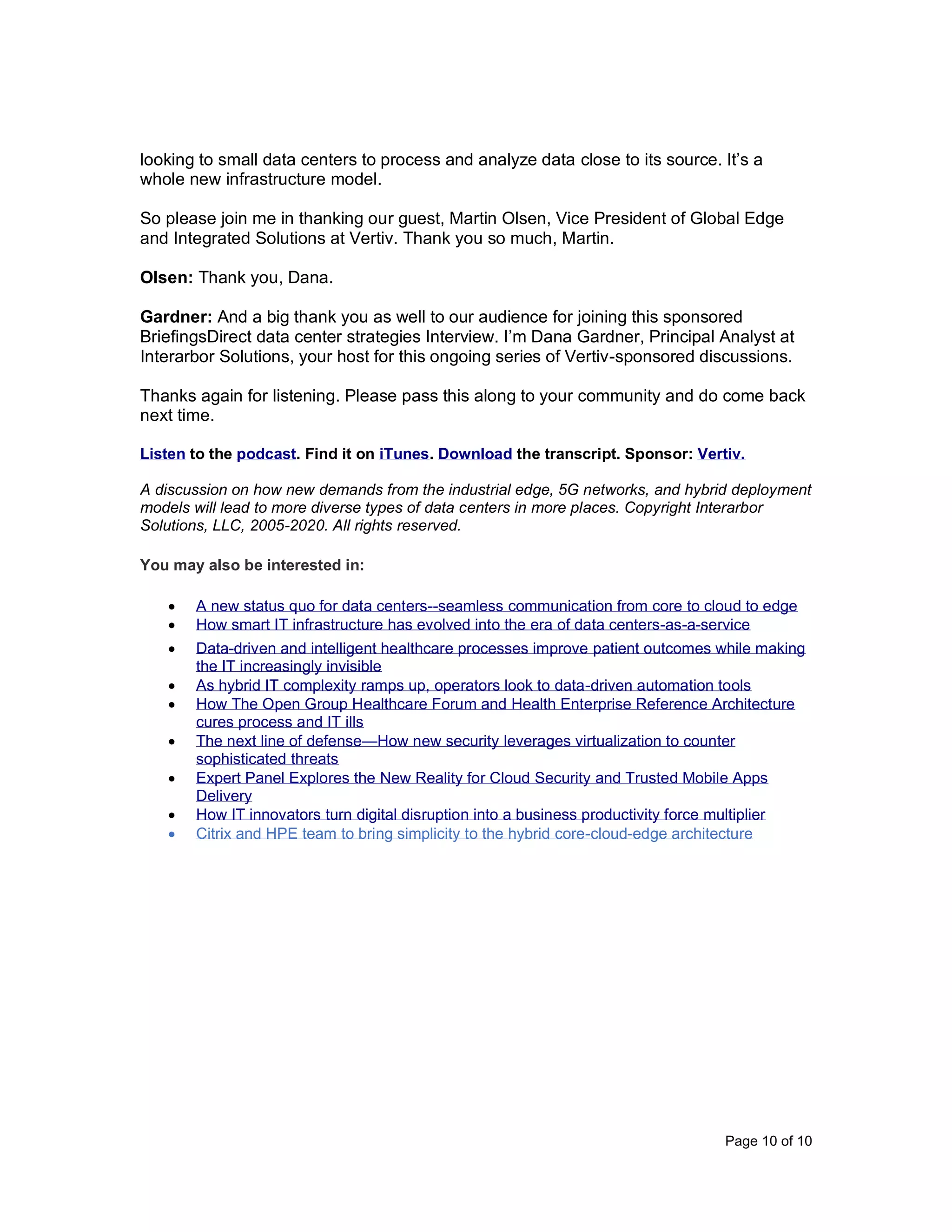The document discusses the transformation of modern data centers influenced by decentralization, 5G networks, and automation, highlighting the need for new deployment strategies to manage diverse infrastructures. A survey reveals that most IT leaders feel unprepared for the demands of edge computing, emphasizing the necessity for self-healing and automated systems in managing dispersed data centers. Challenges include security concerns and the unpredictability of data demand, but advancements in energy efficiency and architecture can help mitigate costs while improving operational efficiency.
![Page 1 of 10
How the Modern Data Center
Extends Across Remote Locations
Due to Automation and Connectivity
A discussion on how new demands from the industrial edge, 5G networks, and hybrid deployment
models will lead to more diverse types of data centers in more places.
Listen to the podcast. Find it on iTunes. Download the transcript. Sponsor: Vertiv.
Dana Gardner: Hello, and welcome to the next edition of the BriefingsDirect podcast
series. I’m Dana Gardner, Principal Analyst at Interarbor Solutions, your host and
moderator for this ongoing discussion on the latest insights into data center strategies.
Enterprise IT strategists are adapting to new demands from the industrial edge, 5G
networks, and hybrid deployment models that will lead to more diverse data centers
across more business settings. That’s the message from a broad new survey of 150
senior IT executives and data center managers on the future of the data center.
IT leaders and engineers say they must update their data centers to exploit 5G and edge
computing field opportunities, as well as to transform their multiple data centers to
leverage the explosive growth of data coming from nearly every direction.
Yet, according to the Forbes-conducted survey, only a small percentage of businesses
are ready for the decentralized and often small data centers that are needed to process
and analyze data close to its source. Stay with us to unpack how more self-healing and
automation will be increasingly required to manage such dispersed IT infrastructure and
hybrid deployment scenarios.
Here to help us learn more about how modern data
centers will extend to the computing edge and beyond
is Martin Olsen, Vice President of Global Edge and
Integrated Solutions at Vertiv[tm]. Welcome, Martin.
Martin Olsen: Thanks a lot, Dana.
Gardner: Martin, what’s driving this movement away
from mostly centralized IT infrastructure to a much
more diverse topology and architecture?
Olsen: It’s an interesting question. The way I look at it
is it’s about the cloud coming to you. It certainly seems
that we are moving away from centralized IT or
Olsen](https://image.slidesharecdn.com/01062020-vertiv-forbesforsherry-200219160927/75/How-the-Modern-Data-Center-Extends-Across-Remote-Locations-Due-to-Automation-and-Connectivity-1-2048.jpg)
